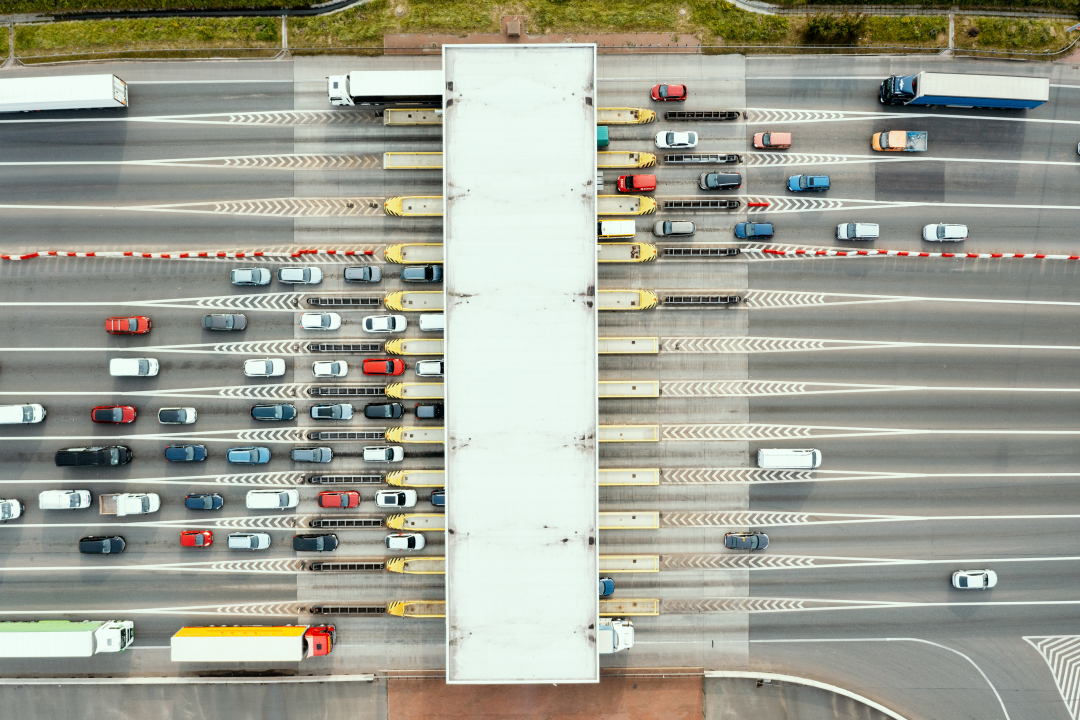
Guest
Wpływ awarii zasilania na Półwyspie Iberyjskim w 2025 r. na transport drogowy
Utworzony: 04.06.2025
•
Aktualizacja: 04.06.2025
W dniu 28 kwietnia 2025 r. na Półwyspie Iberyjskim doszło do rozległej awarii zasilania, w wyniku której miliony domów, firm i usług publicznych w Hiszpanii i Portugalii nie miały prądu. Hiszpańsko-portugalska przerwa w dostawie prądu, która rozpoczęła się o godzinie 12:33 czasu lokalnego, dotknęła główne miasta, w tym Madryt, Barcelonę, Lizbonę i Porto, a także duże części okolicznych regionów. W niektórych obszarach zasilanie powróciło w ciągu czterech do sześciu godzin; w innych zakłócenia trwały do następnego ranka.
Chociaż dokładna przyczyna wciąż jest badana, wczesne doniesienia sugerują, że awaria transgranicznej sieci przesyłowej zakłóciła przepływ energii elektrycznej w obu sieciach krajowych. Skutki były szybkie i rozległe, wstrzymując ruch pociągów, uziemiając samoloty, wpływając na szpitale i usługi publiczne oraz paraliżując infrastrukturę cyfrową. Dla sektora transportu i logistyki wyzwanie było natychmiastowe, dotykając każdego aspektu operacji drogowych, od dostaw towarów i paliwa po kontrolę ruchu i dobrostan kierowców.
"W przypadku awarii zasilania, wiele systemów, na których polegamy, aby zapewnić bezpieczeństwo na drogach - od sygnalizacji świetlnej i oznakowania po komunikację" - mówi Raquel Martinez, European Sales Manager w SNAP. "Zarówno dla kierowców, jak i operatorów flot, przerwa w dostawie prądu w 2025 r. pokazała, jak szybko rutynowe podróże mogą stać się ryzykowne i jak ważne jest, aby wiedzieć, gdzie kierowcy mogą się zatrzymać, aby zapewnić bezpieczeństwo sobie i swoim ładunkom".
Opóźnienia w transporcie
Dla firm transportowych pierwszą i najbardziej palącą kwestią było zawieszenie ruchu towarowego. Na całym Półwyspie Iberyjskim operacje w magazynach, centrach realizacji zamówień i węzłach przeładunkowych zostały spowolnione lub całkowicie wstrzymane. Wpłynęło to również na ruch międzynarodowy, a ciężarówki zostały zatrzymane na granicach, ponieważ władze pracowały nad przywróceniem podstawowej kontroli ruchu i zapewnieniem bezpieczeństwa na drogach.
Gdy transport kolejowy stanął w miejscu, niektórzy operatorzy próbowali przenieść ładunki na sieć drogową, ale wiązało się to z własnymi ograniczeniami. Zatłoczone trasy, niedziałające systemy ruchu drogowego i niejednolity dostęp do paliwa oznaczały, że transport drogowy nie był w stanie wchłonąć popytu. Usunięcie zaległości i przywrócenie niezawodności łańcucha dostaw zajęło kilka dni.

Opłaty drogowe, ruch uliczny i awarie technologiczne
Iberyjskie przerwy w dostawie prądu ujawniły również, w jakim stopniu nowoczesna infrastruktura zależy od systemów cyfrowych. Światła drogowe w głównych miastach zgasły, powodując korki i zwiększając ryzyko wypadków. Elektroniczne oznakowanie, czujniki autostrad i inteligentne systemy wyznaczania tras zawiodły, pozbawiając kierowców wskazówek i aktualizacji w czasie rzeczywistym.
W podobny sposób ucierpiały punkty poboru opłat. Ponieważ automatyczne szlabany i elektroniczne systemy płatności nie działały, pracownicy w niektórych obszarach musieli ręcznie podnosić bramki lub pobierać gotówkę. Doprowadziło to do opóźnień na głównych trasach, utraty przychodów przez operatorów opłat drogowych i obaw o integralność systemu po przywróceniu zasilania.
Niedobór paliwa
Jedną z najwyraźniejszych oznak zależności sektora od energii elektrycznej były stacje paliw. Po awarii zasilania stacje benzynowe w Hiszpanii i Portugalii zostały zmuszone do zamknięcia. Pompy i systemy płatności przestały działać, pozostawiając jedynie niewielką liczbę stacji z generatorami awaryjnymi zdolnymi do obsługi klientów. Zostały one szybko przeciążone, co doprowadziło do długich kolejek, a w wielu przypadkach kierowcy utknęli bez paliwa.
Zakłócenia rozszerzyły się również w górę rzeki, a obiekty portowe i sieci dystrybucji paliwa nie były w stanie działać z normalną wydajnością, opóźniając przepływ paliwa do obszarów śródlądowych i dodatkowo potęgując problemy z dostawami.
Pojazdy elektryczne i infrastruktura ładowania
Dla operatorów pojazdów elektrycznych awaria stanowiła szczególne wyzwanie. Stacje ładowania pojazdów elektrycznych w Hiszpanii i Portugalii nie działały, co sprawiało, że pojazdy elektryczne nie nadawały się do użytku, chyba że były już wystarczająco naładowane, aby ukończyć trasę. Brak dostępu do ładowania sprawił, że niektóre dostawy zostały zawieszone, a pojazdy elektryczne tymczasowo wycofane z ruchu.
Dla firm logistycznych rozważających przejście na floty elektryczne, przerwy w dostawie prądu na Półwyspie Iberyjskim podkreśliły znaczenie planowania awaryjnego i infrastruktury zapasowej w celu utrzymania działalności w przypadku awarii sieci.

Dobrostan kierowców
Być może najbardziej palące obawy dotyczyły dobrostanu kierowców. Miejsca odpoczynku i stacje benzynowe pogrążyły się w ciemności - wiele z nich było pozbawionych oświetlenia, ogrzewania, ciepłego jedzenia lub działających toalet. Niektórzy kierowcy zostali pozostawieni bez bezpiecznego miejsca do odpoczynku podczas wymuszonych opóźnień.
Kolejnym poważnym problemem była komunikacja. W obliczu zakłóceń w działaniu sieci komórkowych kierowcy mieli trudności ze skontaktowaniem się z magazynami, poproszeniem o wsparcie lub uzyskaniem dostępu do aktualnych informacji o ruchu drogowym. Dla wielu z nich lokalne radio stało się jedynym wiarygodnym źródłem informacji. Sytuacja ta stanowiła wyraźne przypomnienie tego, jak narażona może być branża w przypadku awarii infrastruktury krytycznej.
Lekcje na przyszłość
Choć w większości miejsc hiszpańsko-portugalska przerwa w dostawie prądu trwała krócej niż 24 godziny, zakłócenia w transporcie drogowym i przewozach były znaczące. Wpływ przerwy w dostawie prądu na logistykę obejmował wszystko, od dostaw paliwa i odporności infrastruktury po gotowość na sytuacje awaryjne i dobre samopoczucie kierowców. Skłoniło to jednak również do wznowienia dyskusji na temat tego, w jaki sposób operatorzy flot mogą poprawić ciągłość działania i chronić swoich pracowników w obliczu podobnych zdarzeń.
Ustanowienie i przetestowanie solidnego planu ciągłości działania jest ważnym pierwszym krokiem. Powinien on obejmować protokoły komunikacyjne, dostęp do paliwa, alternatywne trasy i rozmieszczenie pojazdów. Tam, gdzie to możliwe, alternatywne harmonogramy i partnerzy dostaw powinni zostać zidentyfikowani z wyprzedzeniem - szczególnie w przypadku ładunków wrażliwych czasowo lub krytycznych.
Wspieranie dobrego samopoczucia kierowców ma kluczowe znaczenie w takich sytuacjach. Zestawy awaryjne - zawierające przekąski, wodę, latarki, power banki i odzież odblaskową - mogą zapewnić poczucie bezpieczeństwa i praktyczną pomoc.
"Operatorzy mogą również chcieć dokonać przeglądu obiektów w zajezdniach, aby upewnić się, że kierowcy mają bezpieczne miejsca do odpoczynku, zwłaszcza podczas dłuższych opóźnień" - mówi Raquel. "Świadomość, że w regionie istnieje sieć postojów dla ciężarówek, taka jak nasza sieć partnerska, może dać pewność, że jest gdzie się zatrzymać do czasu powrotu zasilania.
"Przerwy w dostawie prądu na taką skalę mogą być rzadkością, ale ryzyko jest realne. Operatorzy muszą zastanowić się, w jaki sposób budują odporność i dostosowują się do sytuacji, aby utrzymać ruch - od zapewnienia dostępu do paliwa po ponowną ocenę planowania tras i zapewnienia odpoczynku w sytuacjach awaryjnych".
Usługi mobilności SNAP w Hiszpanii
Posiadamy rozległą sieć postojów dla ciężarówek i obszarów usługowych w całej Hiszpanii i Europie. Odwiedź naszą interaktywną mapę, aby zobaczyć, gdzie możesz dziś znaleźć naszych partnerów.



